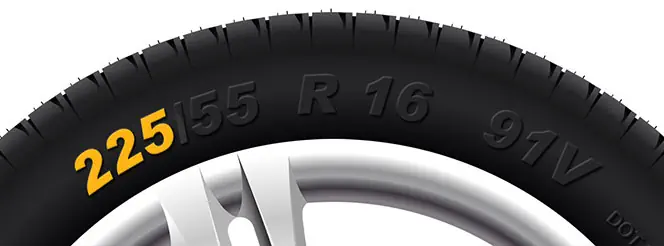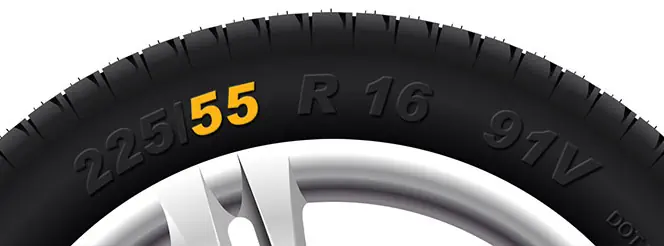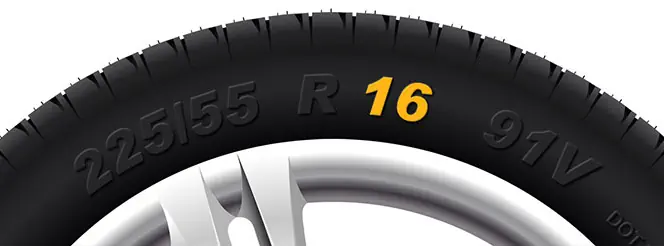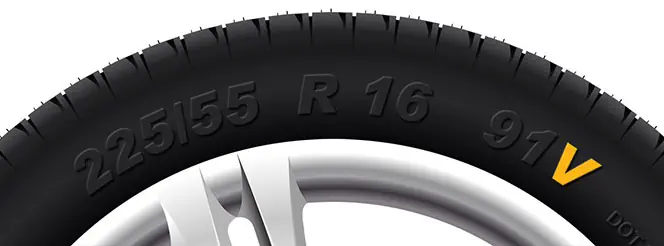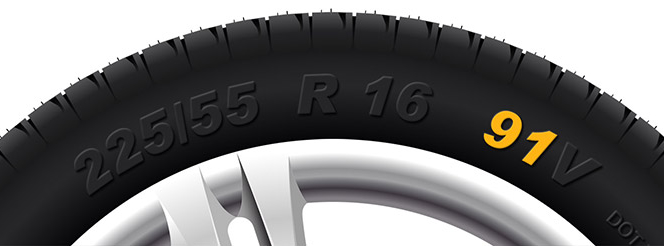Can You Mix Premium & Budget Tyres?
Jessica Bird | Saturday 31st May 2025 10:25am
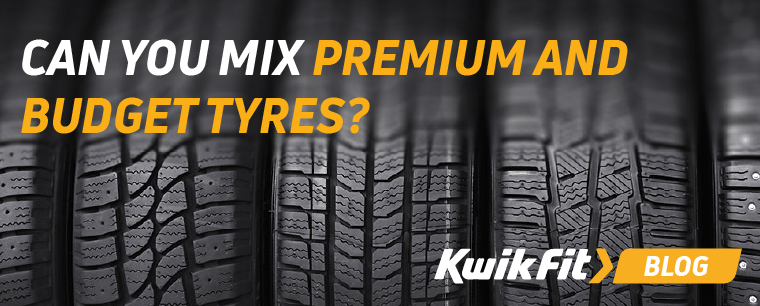
In a bid to pinch the pennies, many drivers consider replacing a worn or irreparable premium tyre with a budget tyre – but is it ok to mix premium and budget tyres?
Well, so long as you’re fitting an appropriate tyre with enough tread depth, and ideally a new tyre sourced via a trusted garage, there’s no legal reason why you can’t mix premium and budget tyres - but there are lots of technical reasons why you may want to avoid doing so.
Here’s everything you need to know.
What's the difference between premium & budget tyres?
Car tyres, along with brakes, are arguably the most important vehicle component when it comes to safety and performance. We go into a lot more depth about the difference between premium & budget tyres here, but the short answer is that ‘premium’ tyres are those made by premium tyre brands such as Michelin, Goodyear, and Continental, who spend millions to research and develop cutting edge tyre tech.
On the other hand, budget brands (especially the ones we stock at our centres) still provide a solid option, but don’t come with the performance and safety benefits that premium tyres do – and they may wear down faster than premium fitments.
The risk of mixing
1. Inconsistent performance
This first point is particularly important if you’ve invested in a performance car or you do a lot of driving. Premium and budget tyres differ in their tread patterns, rubber compounds, and construction, so mixing them can result in uneven handling characteristics - as each tyre responds differently to road conditions.
This is the case whether you’ve got one budget tyre with a set of premiums, or even if you’ve got an axle pair of budget tyres. Because this disparity affects how the tyres behave, it can compromise the vehicle’s stability – especially during cornering or sudden manoeuvres.
2. Compromised safety
This needs specifying here: the performance downsides caused by mixing premium and budget tyres don’t just affect performance and comfort, but directly affect the safety of everyone in the car. Premium tyres are designed to offer superior grip and shorter braking distances – especially in adverse weather conditions like wet and snowy roads.
For example, if you have the rear axle wheels fitted with budget tyres and the front axle fitted with premium tyres, then the back of your car will tend to want to spin as you turn. This isn’t such an issue at low speeds, but when you’re driving 60 mph and meet a sudden turn, this can quickly result in a spinout - potentially causing a collision.
3. Legal implications
While UK law doesn’t explicitly prohibit mixing different tyre brands, it mandates that tyres must be suitable for the vehicle and in good condition. Having different types of tyre on the same axle can lead to MOT failures – but this is more related to having different seasonal tyres fitted to the the same axle, rather than a budget and premium tyre.
The tyre tread pattern differences on wet-weather tyres, for example, are designed to channel water away from the vehicle, so fitting them the wrong way around can cause a lot of problems. Our local experts are always on hand advise on the best way to fit tyres.
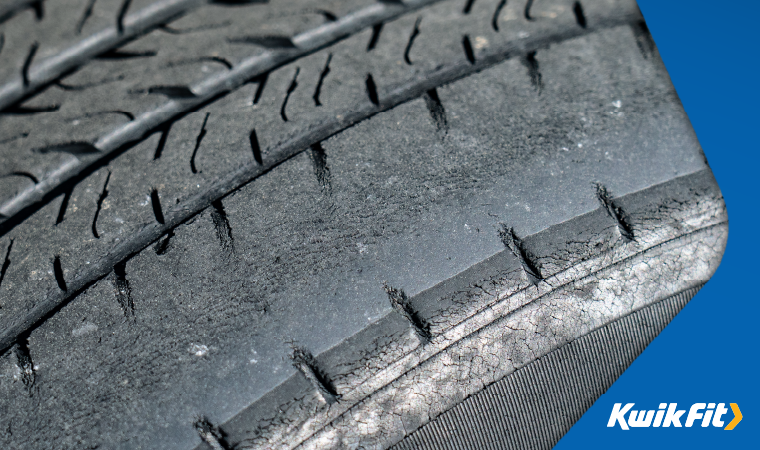
4. Uneven tyre wear
This point, alongside the performance and safety benefits, is why we always recommend opting for premium tyres when you have the budget to do so. Due to the lack of proprietary rubber compounds and tyre construction technology, budget tyres tend to wear down a lot faster than premium ones. This inevitably means that the few pounds or so you saved by fitting a cheap tyre are quickly cancelled out by having to fit another new tyre after a year or two.
Assuming you don’t pick up a pesky puncture in your sidewall, premium tyres will almost always work out cheaper in the long run – simply because they last for so much longer!
Best practices for tyre replacement
To make sure you’re always getting the most out of your tyres in terms of performance and safety, keep these guidelines in mind:
- Replace tyres in axle pairs: Replacing tyres in axle pairs is the best way to make sure you’re getting optimal performance from your tyres. An over-worn tyre on one side of the axle will tend to create excessive strain on the other tyre. Learn more about axle pairs here.
- Keep the same brand & type of tyre: Ideally, all four tyres on your car should be made by the same brand and be the same model and tyre type. When manufacturers are designing a new tyre model, they design it with the intention that all tyres on the car will be that model, so this is how to see the most benefits.
- Regular maintenance: Regularly check tyre pressures, alignment, and tread depth. We go into detail about tyre wear and maintenance on this page – but ultimately, regular checks go a long way to making your tyres go further.
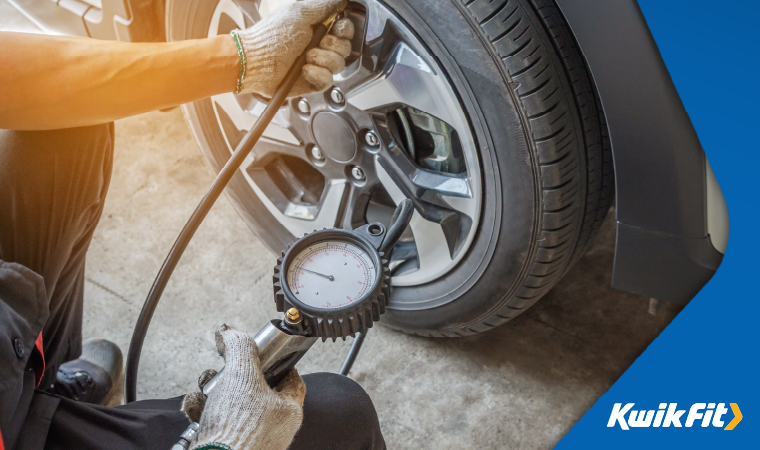
So can you mix premium & budget tyres?
In short, while it might be tempting to mix premium and budget tyres due to the cost savings, these savings are often only in the short term - and you may be compromising the performance and safety of your vehicle. If you need help choosing the perfect tyres for your car, get in touch with the experts at your local Kwik Fit centre to book a fitting, or to have any tyre-related questions answered.
Any facts, figures and prices shown in our blog articles are correct at time of publication.
Featured Articles
Is it Illegal to Drive With One Headlight?
Saturday 19th July 2025
Wondering if it’s illegal to drive with one headlight? Learn about the safety risks and penalties of illegal blown bulbs and why you should fix them promptly.
Air Con in EVs & Hybrids: Experts Answer Your Questions
Monday 30th June 2025
Does air con drain EV batteries? Can you use the air con while charging an electric car? Find out the answers to these questions & more from Kwik Fit’s experts.
Why Is Your Car Making a Noise? Fixes & Tips
Friday 13th June 2025
When your car starts making unexpected noises, it can certainly be quite disconcerting; it may be nothing to worry about, but here’s what you need to know.





